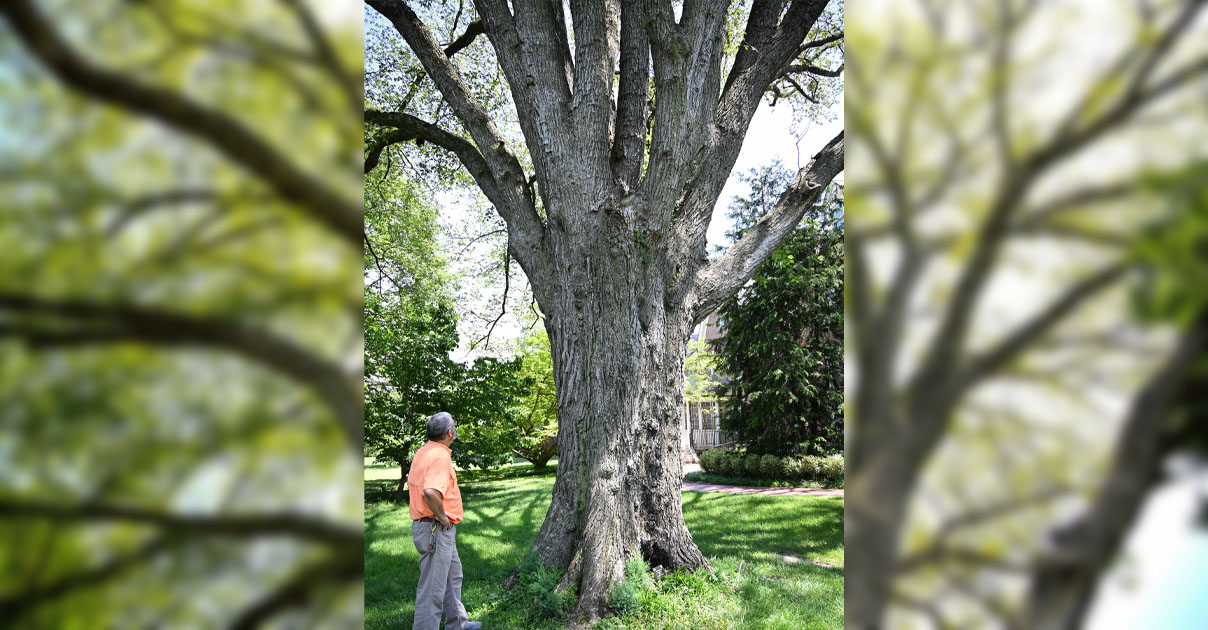SU Tree Removal to Help Maintain Health of Campus Ecosystem
SALISBURY, MD---Salisbury University celebrates 30 years of national arboretum status this year, marking three decades since its addition to the Morton Register of Arboreta in 1993.
During that time, SU has received a number of accolades for its grounds, including being named among the nation’s best collegiate arboreta in 2015 and becoming, at that time, one of only 25 arboreta worldwide (and just 14 in the U.S.) to earn ArbNet Level III accreditation in 2018.
This success is attributed to SU’s Horticulture and Grounds Department, which works year-round to maintain the 200-acre campus, including lawns, trees, flowerbeds and multiple gardens. Its employees’ efforts focus not just on planting new vegetation, but on ensuring a healthy ecosystem for all plant life on campus.
This summer, that has included removing several large trees that have succumbed to disease. According to Richard Shaw, SU horticulturist and board-certified master arborist, this proactive maintenance restricts older trees, which are more susceptible to disease, from developing conditions that also could impact less mature plants and trees nearby, creating widespread issues. Current concerns include bacterial leaf scorch and pine bark beetles.
In a controlled environment, most trees can have a very long lifespan, Shaw explained. A majority of those being removed today, many of which are red oaks, were planted in the 1980s.
“We’re not just cutting down trees,” he said. “We’ve got disease issues. We’ve got a climate change issue. We’re seeing a lot of underlying factors.”
Though not part of the department’s immediate removal plans, one of the campus’ oldest trees, currently the largest American elm in Wicomico County, also is in danger. Estimated to be about the same age as the University, for which ground was broken in 1923, the tree, on Holloway Hall Lawn, was weakened by Dutch elm disease in the ’80s and is slowly dying of a fatal condition.
“It’s going to be a huge loss, but we can’t let it damage the building or hurt people walking under it,” Shaw said. “Whether it dies naturally or we need to take action in advance, now is the time for the campus community to fully appreciate that tree.”
Not all trees removed are gone for good. For example, the department already is working on plans to relocate healthy trees scheduled to be cleared in connection with the expansion of Blackwell Hall into a new student service center, expected to begin next year.
Those that cannot be saved, such as the ones being removed this summer due to age or disease, are replaced, though not always in the same location, Shaw said. The department considers a number of factors, including potential future use of space for admissions and academic purposes, as well as whether a new tree may impede views from classrooms and offices in adjacent buildings.
At the end of the day, the removal of unhealthily trees and planting of new ones are part of the Horticulture and Grounds Department’s comprehensive plan to ensure both function and natural beauty throughout the University while maintaining the overall health of the arboretum.
“We want to see them all thrive as much as possible,” said Shaw. “We’re probably the biggest tree-huggers on campus.”
Learn more about opportunities to Make Tomorrow Yours at the SU website.

